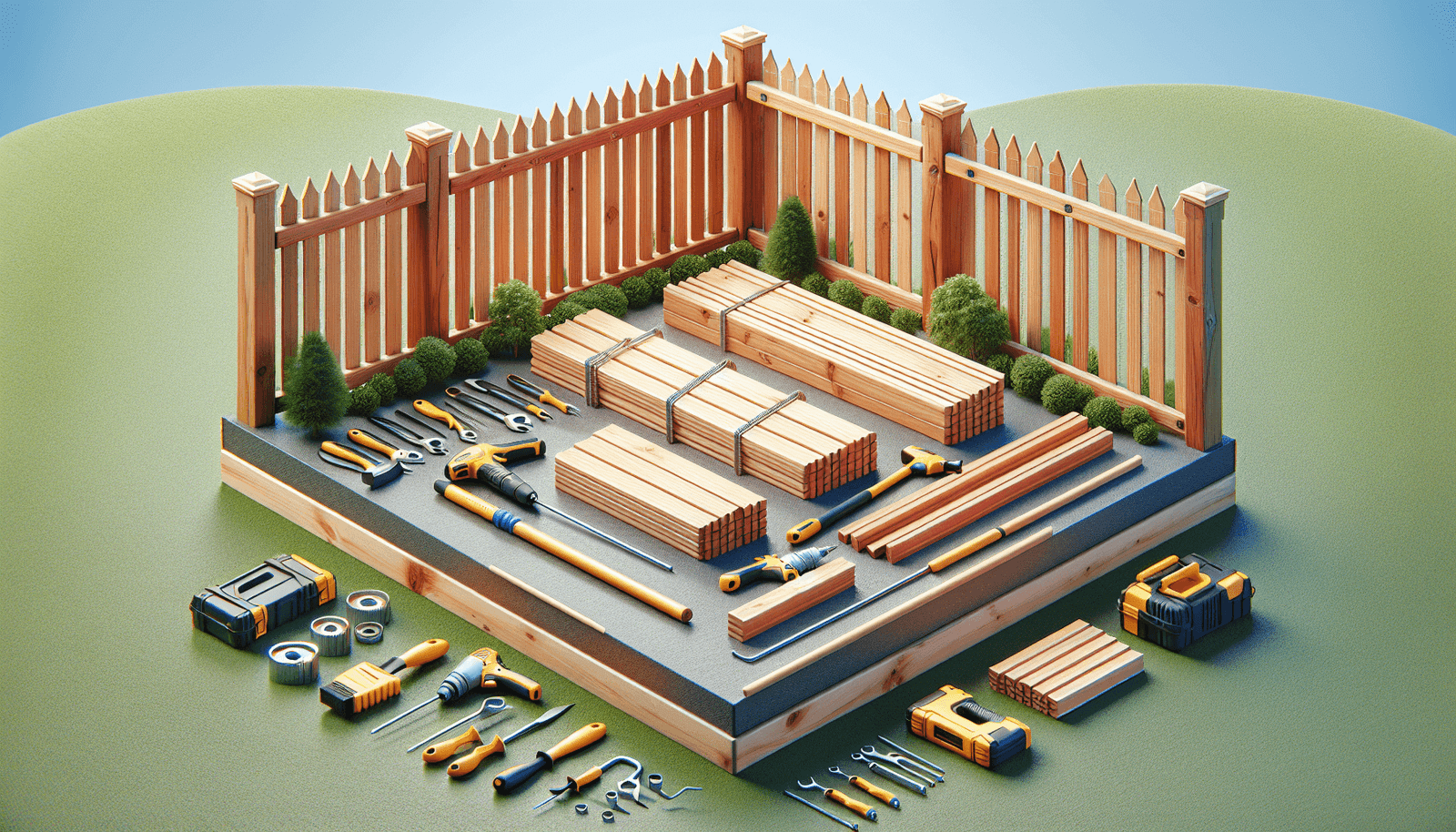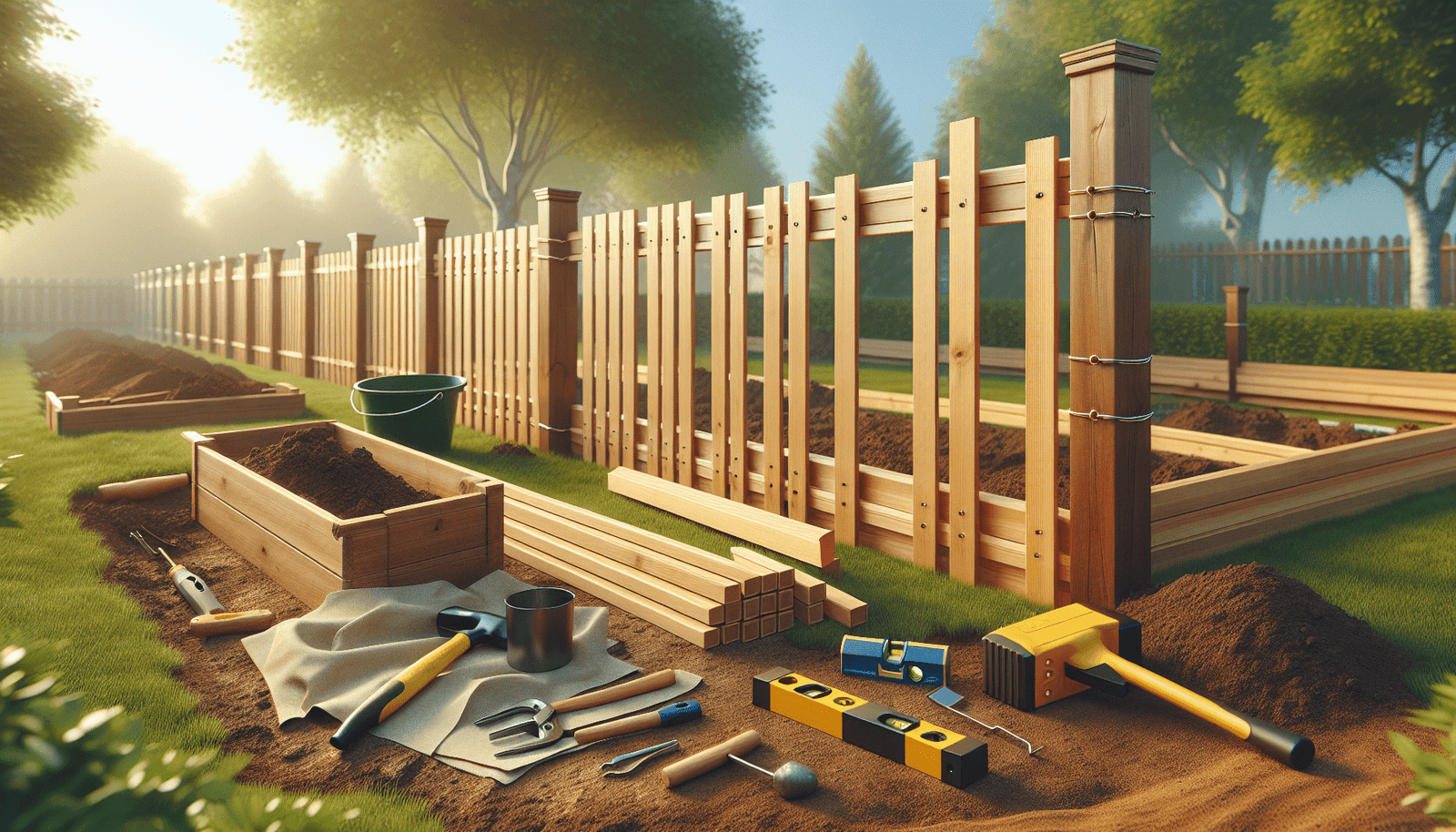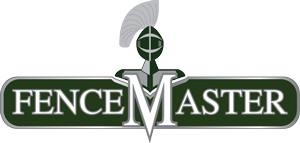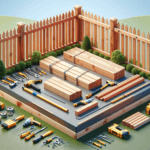
Taking on a fence project can be an exhilarating journey, filled with opportunities for creativity and personal expression. Begin your venture with thorough fence planning to select a design that complements your property.
Essential tools and materials are necessary, including post hole diggers and levelers, to help streamline the work.
Preparing the site is equally important, along with precise measuring and marking for your layout.
After securing the posts, attaching panels will become straightforward. Keep maintenance in mind to ensure the longevity of your installed structure.
Click here to learn more about: residential.html
Fence Planning Essentials For Your Residential Or Commercial Project
Following the guidelines established in earlier discussions on fence preparation and maintenance creates a strong foundation for effective fence project planning. Assessing your specific needs is crucial; start by determining the main purpose behind your fence, whether it’s to enhance security, provide privacy, or improve the aesthetics of your property.
This understanding will guide your choices regarding design and materials selection throughout the project. Next, take the time to investigate your property carefully, noting essential elements such as boundary definition and any nearby utility lines that could impact installation.
The choice of materials is also crucial; you should select options like wood fencing, chain link, ornamental iron, vinyl, or aluminum based on durability and maintenance considerations. When planning the installation phase, always prioritize safety measures, particularly if using heavy installation tools such as concrete footings or fence posts.
Moreover, proper leveling techniques are essential for creating a sturdy and long-lasting structure. Aim for accurate measurements during setup to avoid costly mistakes. To further enhance your project, refer to insights from the previous section that offer practical advice on selecting appropriate fencing styles, the installation process, and important safety precautions that ensure a secure and visually appealing outcome.

Selecting The Perfect Fence Design To Enhance Aesthetic Appeal
With a solid understanding of the importance of fence planning and materials selection discussed earlier, it’s time to focus on the next crucial aspect: selecting the right fence design. A well-considered boundary structure not only boosts your property’s visual appeal but also serves vital functions like privacy and security.
For instance, wood fencing captures a warm, natural feel that blends beautifully with various landscaping designs. It’s essential to consider the architectural style of your home alongside the character of the surrounding landscape when making your choice.
If you are drawn to the timeless charm of wood or prefer the sleek elegance of ornamental iron, each fencing material adds its own unique flair and sophistication to your outdoor visual appeal. Moreover, different styles can complement distinct home exteriors, providing opportunities for personalization while still adhering to community standards.
Outdoor Enclosures
- Wood fencing can enhance property value through increased curb appeal.
- Enclosures are vital for ensuring privacy, turning outdoor spaces into serene retreats.
- Options like ornamental iron deliver unique aesthetics and long-lasting durability.
- Well-designed boundaries elevate security by deterring potential intruders.
Choosing The Right Materials For Maximum Durability And Style
The insights from earlier discussions on fence planning and design play a crucial role in making informed material choices. Selecting suitable materials will significantly enhance both the functionality and aesthetics of fencing solutions, ensuring they serve their intended purpose effectively.
Aluminum stands out for its lightweight characteristics while maintaining impressive strength, making it a practical choice with low maintenance requirements. This durability is crucial for homeowners looking to simplify upkeep without sacrificing quality.
Moreover, various options allow for unique design aesthetics, combining durability with visual appeal for optimal results in your fencing project. Wood fencing offers a timeless look that can be tailored to fit personal style, although it may need periodic care to preserve its charm, such as staining or sealing.
On the other hand, vinyl can resemble traditional styles and is available in a variety of colors, requiring minimal upkeep while ensuring longevity. Its weather resistance makes it an attractive option for diverse climates and situations.
Metal options like ornamental iron and aluminum provide both resilience and sophistication, though they might require protective measures against rust. These materials can serve as stunning boundaries that enhance property lines while offering robust security features.
Lastly, composite materials present the classic look of wood fused with enhanced durability, making them suitable for various environments. Always consider factors like local regulations, maintenance needs, and potential gates that can elevate the overall effectiveness and aesthetic value of your fencing project.
Must-Have Installation Tools For A Seamless Fence Setup
Understanding the significance of selecting the right design and materials selection is essential for successful fence installation. After settling on the ideal style and components, gathering the appropriate installation tools becomes crucial for a smooth setup that adheres to local regulations and improves project preparation.
Essential Tools for Post Installation
Among the must-have tools, post hole diggers are vital for creating precise holes that ensure sturdy fence posts. A reliable level plays a critical role in maintaining proper alignments, guaranteeing that every panel is positioned accurately along your property lines.
Measuring and Drilling Tools
Accurate measurements are key, making the use of a measuring tape necessary to avoid costly mistakes caused by incorrect sizing. Additionally, a powerful drill can facilitate quick assembly of your fencing elements, while wearing safety gear throughout the process ensures adherence to necessary safety measures.
Enhancing Aesthetics and Functionality
With the right materials chosen for their durability and visual appeal, preparing your installation tools now allows for a seamless workflow. Effective leveling techniques utilized during installation will not only enhance aesthetics but also support the longevity of your fence. Incorporating suitable accessories, such as gates for access control, will further improve the functionality of your boundary solutions.
Comprehensive Step-by-Step Guide To Installing Fence Posts
The earlier discussions about materials selection and tools required form a solid base for understanding the details of setting up fence posts. With a focus on achieving durability, it’s essential to carefully consider each element of the installation process.
Before starting, familiarize yourself with local regulations regarding fence height and boundary definitions. Understanding community standards is critical to avoid potential issues later on, ensuring your project complies with zoning laws.
Once you have clear guidelines, measure the area designated for your fence accurately. Utilize stakes and string to mark precise property lines, establishing straight lines for each post location. This preparatory work is crucial to prevent misalignment, which could lead to costly repairs in the future.
When digging post holes, the appropriate tools significantly influence the outcome of your installation. A post hole digger or auger will help you attain the necessary depths and widths according to the type of fencing setup, whether it be ornamental iron, wood fencing, or vinyl. Typically, holes should be about one-third the height of the fence posts deep, providing the necessary stability to withstand various weather conditions.
Moreover, using concrete footings boosts the durability of your fence posts and enhances resistance to movement over time. Always account for local regulations to ensure compliance and avoid installation challenges that might require additional fixes.
Additionally, after placing your posts in the holes, consider leveling techniques to ensure they stand straight and true. Proper alignment is key not just for aesthetics but also for the lifespan of your fencing structure. Taking the time to confirm that each post is correctly positioned lays the groundwork for a successful installation.
Lastly, integrating gates and other accessories will enhance functionality. Access control solutions complement the overall design, ensuring that your fencing serves its intended purpose effectively. Keeping all these elements in mind will lead to a well-planned project that meets your needs for privacy, safety, and visual appeal.
Proven Leveling Techniques For Ensured Fence Stability
After understanding the essential tools and methods for installing fence posts, it is clear that mastering leveling techniques is vital for long-lasting results. Precise measurements and proper alignments significantly contribute to both the stability and visual appeal of your fence.
Using a string line method helps maintain accurate distances and ensures a straight and uniform alignment for your posts. Begin by positioning the line carefully along your designated property lines, and then set your posts according to that guide.
Next, use a level tool to confirm vertical alignment for each post, allowing for necessary adjustments to achieve accuracy. Incorporating concrete footings during this stage adds an extra layer of stability, enhancing durability against weather elements while complying with local regulations.
With thorough project preparation and adherence to safety measures, the final result will be a fence that withstands the test of time and enhances the overall aesthetics of your property. Integrating gates and other accessories will further improve functionality and access control, contributing to an effective boundary definition that meets your needs for privacy and style.
Navigating Local Regulations And Obtaining Necessary Permits
Understanding local regulations plays a crucial role in the successful execution of your fencing project, especially after grasping the essentials of level alignments and installation techniques. Researching boundary definition guidelines is vital because these rules dictate the types of installations allowed for your property and its geographical context.
Familiarity with zoning laws specifically relevant to your area ensures compliance and helps avoid potential disputes with neighboring properties. Properly acknowledging these legal parameters not only aids in developing effective privacy solutions but also allows for smoother cooperation with local authorities.
Securing the necessary permits is a foundational aspect of the process. This typically requires documentation such as property surveys and construction plans, which are crucial for ensuring a flawless post installation experience. Always check which types of projects may need additional approvals to prevent delays.
Furthermore, understanding the local guidelines enhances your project preparation. It provides clarity on how your chosen materials, whether they be wood fencing, chain link, ornamental iron, vinyl, or aluminum, fit within community standards. Adhering to regulations also allows for better integration of gates and access control measures that contribute to the aesthetics and functionality of your fence.
As you move forward, ensure that safety measures are implemented to protect yourself during the installation. These precautions are particularly important when engaging with heavy tools or materials, as they help in mitigating risks associated with construction. Grasping the balance between compliance and design will ultimately lead to a well-executed project that meets all your needs for durability, privacy, and visual appeal.
Implementing Safety Measures To Protect Yourself During Installation
Ensuring safety during fence installation is critical for a successful project. By adhering to safety guidelines, you enhance your understanding of local regulations while preparing the site effectively. This not only reduces potential hazards but also aids in the smooth progress of the installation.
Always wear protective gear such as gloves and safety glasses to reduce the chance of injuries. Your safety should always be a priority as you plan and execute the installation process. Properly preparing the site is essential; make sure to clear debris and identify underground utilities, especially when working with concrete footings.
Using correct lifting techniques is important; consider mechanical aids like dollies or hoists to handle heavy pressure-treated wood, which can lessen physical stress. Additionally, having a first aid kit on hand will allow for a quick response to any unexpected situations, ensuring you are ready for emergencies during the installation.
Installation Safety
- Wearing protective gear can reduce the risk of injuries by up to 70%.
- Proper site preparation can prevent accidents related to hidden utilities, which can lead to costly repairs and safety hazards.
- Using mechanical aids like dollies or hoists can decrease the risk of musculoskeletal injuries by minimizing physical strain.
- Having a first aid kit readily available can significantly improve response times in emergency situations, potentially saving lives.
Cost Estimation Strategies And Budgeting Tips For Your Fencing Project
Having a solid understanding of safety measures and local regulations sets a strong base for managing your project’s finances effectively. An organized financial plan is crucial to ensure that your fencing project aligns with your vision without causing unexpected financial strain.
Begin by identifying the types of fencing that suit your needs, as costs can vary significantly among options like wood fencing, vinyl, and ornamental iron. Each material offers different aesthetics and durability levels, which can influence your long-term maintenance and repairs.
Establish a project timeline outlining every phase from preparation to installation. This should include budgeting for hardware and installation tools, allowing you to allocate funds appropriately throughout the project. Additionally, consider incorporating a contingency fund to cover any unforeseen expenses that may arise, ensuring you remain within your budget even if challenges occur.
Prioritize your project elements, such as desired fence height and design features, to make informed financial choices. Assessing community standards and zoning laws can help determine potential limitations, which may impact your overall budget. Choosing the right gate styles and access control measures can enhance both function and visual appeal while also affecting your cost estimation.
By carefully planning your materials selection and installation techniques, you’ll be able to achieve a visually appealing and durable fence that meets your privacy solutions and complements your landscape integration. With thoughtful budgeting and expert advice, your fencing project can be both fulfilling and financially sound.
Best Maintenance Practices For Ensuring Long-Lasting Fencing Solutions
With a strong foundation in safety measures and effective budgeting, it’s important to focus on extending the life of your fencing investment. Regular upkeep is critical to keeping a fence both functional and visually appealing throughout its lifespan. Conducting periodic assessments allows homeowners to identify installation challenges early, facilitating timely repairs.
Properly cleaning your fence is another significant step. It prevents debris accumulation that can accelerate deterioration and weaken its strength. Different types of fencing—whether wood fencing, vinyl, or ornamental iron—may require specialized treatments. These could include specific sealants or paints to guard against various environmental factors.
Addressing minor repairs promptly can greatly enhance the longevity of your chosen materials. Managing surrounding vegetation is crucial for maintaining alignments and minimizing the risk of decay. This proactive approach not only protects your investment but also improves the overall aesthetics of your property.
| Maintenance Activity | Importance |
|---|---|
| Regular Assessments | Identify installation challenges early |
| Proper Cleaning | Prevents debris accumulation and deterioration |
| Specialized Treatments | Protects against environmental factors |
| Managing Vegetation | Maintains alignments and reduces decay risk |
The Future Of Fencing With Fencemaster Houston
Boosting Property Value How The Right Fence Can Help With Fencemaster Houston


